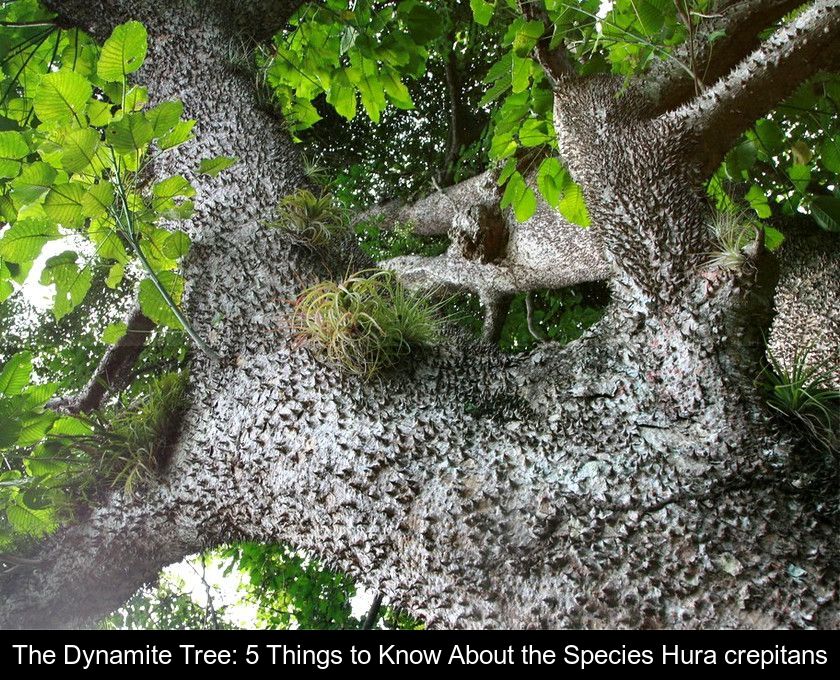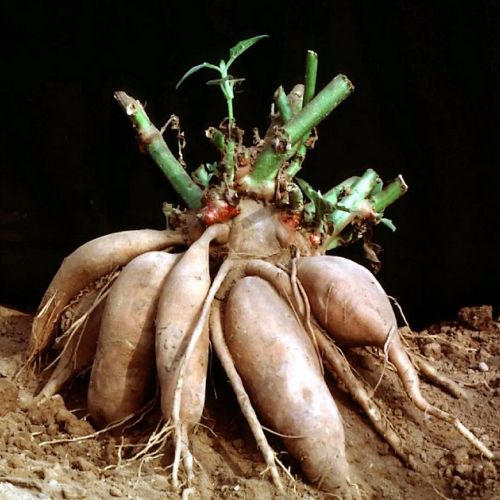The Dynamite Tree: 5 Things To Know About The Species Hura Crepitans
Among the world's most dangerous trees, the Hura crepitans species stands out for its explosive nature! This tropical specimen is called the dynamite tree or sandbox tree because its fruits explode loudly to disperse their seeds. Here are 5 things to know about this amazing plant.
He has many picturesque names.
The species Hura crepitans is a tropical tree from the Euphorbiaceae family. Its Latin scientific name might not ring a bell because it is better known under the picturesque names of sandglass, dolphin tree, dynamite tree, firecracker tree, or sandbox tree.
Its explosive nicknames all refer to the way the tree disperses its seeds over great distances. In the tropical regions where this tree is found, it is also called devil's wood or devil's fart!
In a gentler context, this species owes its nickname of dolphin tree to the shape of the carpels that contain the seeds. On the island of Réunion, the dried carpels are carved into the shape of little dolphins.
It projects seeds within a radius of 30 meters.
The Dynamite Tree truly lives up to its name as its fruits loudly explode to disperse their seeds. Each fruit is a miniature pumpkin-shaped capsule containing beige-colored seeds. At the beginning of the rainy season, when they come into contact with water, the capsules literally burst into pieces.
This phenomenon is accompanied by a very distinctive crackling noise, hence the Latin name of this tree. But above all, this feature is very effective for spreading the seeds over long distances, within an average radius of 30 meters, or even more.
The seeds, with a diameter of 16 mm, can injure an unwary walker as they are expelled at a speed of 250 km per hour.
It's better to stay away from it.
When facing a dynamite tree, it's best to keep your distance, and not just because this species propels its seeds like dangerous projectiles.
This large tree, which can grow up to 30 meters tall, is also characterized by a trunk covered with spines. This feature is likely an adaptation of the species to prevent certain animals such as monkeys from climbing its trunk to eat its fruit.
Some parts of this tree are toxic.
As if the thorns on its trunk and the explosive nature of its fruits were not enough to make this tropical tree dangerous, the Hura crepitans species is also feared for its toxicity.
Like other plants in the Euphorbiaceae family, it produces a highly irritating latex for the eyes, skin, and mucous membranes. This tree is native to the tropical regions of North and South America, and in the Amazon, fishermen use its yellow latex to sedate fish.
Despite the tree's toxicity, monkeys and certain birds such as parrots feed on the fruits and seeds of the dynamite tree when they are ripe. For humans, it is possible to consume the fruits as long as they are well cooked. Raw fruits are toxic due to the presence of latex with purgative effects.
5- It is recognized by its general shape and its fruits.
In the tropical forests where it originates, the dynamite tree can grow over 40 meters tall and its trunk can measure more than one meter in diameter. From a distance, this species is recognized by its majestic bearing. Its branches spread wide and provide dense shade.
Upon closer observation, you will recognize it by the thorns covering its trunk, its red flowers, and its fruits shaped like miniature pumpkins. The flowering presents a form of hanging catkins for male flowers and tubes for female flowers.
If you hear a sound like firecrackers, you can be sure you are dealing with this bombardier tree. But be cautious and keep your distance as the tree projects its seeds at high speed over great distances.



